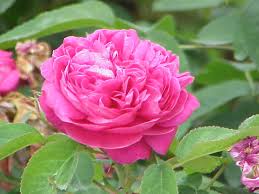
Flowers, with their vibrant colors, fragrant blooms, and lush foliage, contribute significantly to the creation of green landscapes and the reduction of air pollution in urban environments. As cities grapple with the challenges of urbanization and environmental degradation, incorporating flowers into urban planning and design emerges as a sustainable solution for enhancing the quality of life and mitigating the adverse effects of air pollution. Let’s explore the impact of flowers on green landscapes and air quality improvement.
**1. Green Landscapes and Urban Biodiversity:**
Flowers play a crucial role in creating green landscapes that enhance urban biodiversity and provide essential ecosystem services. By incorporating flowering plants into parks, gardens, and green spaces, cities can support diverse communities of pollinators, birds, and beneficial insects, contributing to ecological balance and resilience. Additionally, the presence of flowers in urban areas improves aesthetic appeal, promotes mental well-being, and fosters a sense of connection to nature among residents.
**2. Air Pollution Mitigation:**
Flowers contribute to air pollution mitigation through various mechanisms, including air purification, carbon sequestration, and oxygen production. Certain flowering plants, such as palms, ferns, and peace lilies, have the ability to remove harmful pollutants, including volatile organic compounds (VOCs) and particulate matter, from the air through a process known as phytoremediation. Additionally, the photosynthetic activity of flowers helps to absorb carbon dioxide and release oxygen, contributing to improved air quality and reducing the urban heat island effect.
**3. Green Infrastructure and Sustainable Development:**
Integrating flowers into green infrastructure projects, such as green roofs, vertical gardens, and roadside plantings, offers multiple benefits for sustainable urban development. Green roofs adorned with flowering plants not only provide habitat for pollinators and wildlife but also regulate stormwater runoff, reduce energy consumption, and improve building insulation. Similarly, vertical gardens featuring cascading flowers enhance aesthetic appeal, mitigate heat buildup, and promote biodiversity in densely populated urban areas.
**4. Community Engagement and Environmental Education:**
Engaging communities in flower planting initiatives and urban greening projects fosters environmental stewardship and promotes a sense of ownership over green spaces. Community gardens, flower festivals, and educational programs offer opportunities for residents to learn about the importance of flowers in urban ecosystems and participate in efforts to improve air quality and enhance biodiversity. By empowering citizens to take an active role in urban greening, cities can build resilient communities and foster a culture of sustainability.
**5. Policy and Planning Initiatives:**
Effective urban planning and policy measures are essential for integrating flowers into green landscapes and addressing air pollution challenges. Cities can adopt policies that incentivize the use of flowering plants in public spaces, provide financial support for green infrastructure projects, and establish regulations to protect urban greenery from pollution and encroachment. Furthermore, collaboration between government agencies, non-profit organizations, and private stakeholders is critical for implementing comprehensive strategies that prioritize green landscapes and air quality improvement in urban environments.
**Conclusion:**
In conclusion, flowers play a vital role in shaping green landscapes and mitigating air pollution in urban areas. By harnessing the power of flowers, cities can create vibrant, biodiverse environments that enhance quality of life, promote public health, and support sustainable development. Through collaborative efforts and innovative approaches to urban greening, cities can harness the transformative potential of flowers to build resilient, livable communities for present and future generations.









